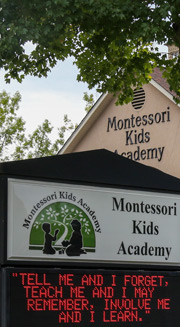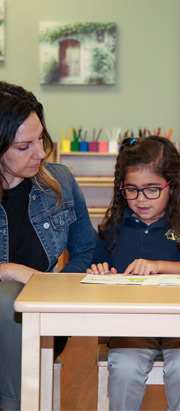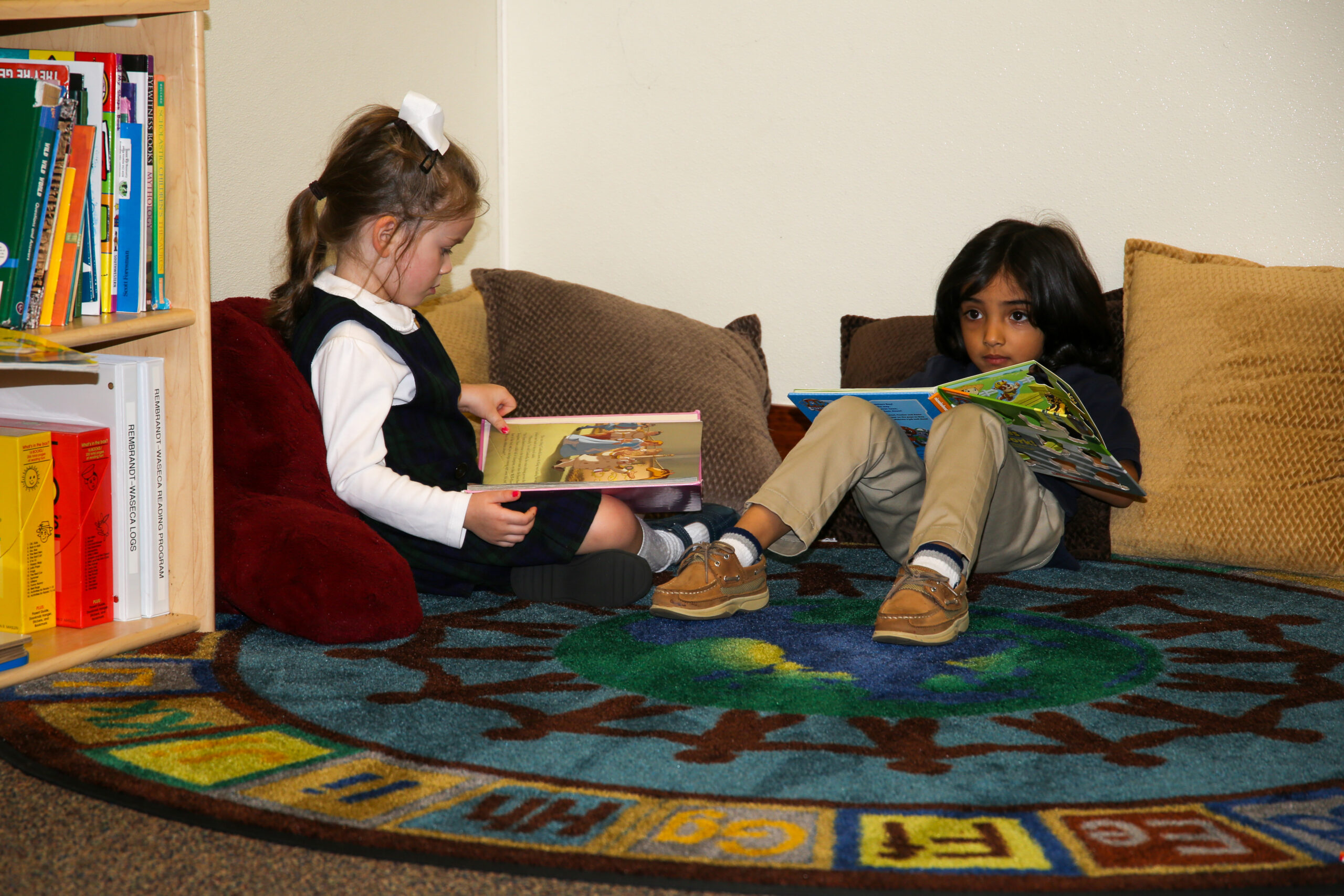December Tuition Special
Overview of the Pre-Primary Classroom Areas
Pre-Primary classrooms are designed to meet the needs of 18 month to 3 year old children. The entire environment is carefully created to facilitate their learning process. Maria Montessori felt a carefully prepared environment is a critical part of a young child’s education because, “the things he sees are not just remembered; they form a part of his soul.”
The young child has a very strong sense of order, a great desire for self-direction, and a preference for parallel play. Our Pre-Primary classroom is carefully prepared with this in mind, allowing the children to explore and learn in a secure and loving environment. The classroom is filled with activities that stimulate and nourish the small child’s sensorial need to smell, touch, hear, see and taste. The aim is to guide very young children as they begin their life-long journey of learning.
The Montessori Pre-Primary classroom includes activities in the areas of Practical Life, Sensorial, Mathematics, Language Arts, Science, and Geography.
Practical Life
Work that emphasizes fine motor skills and independence
Teaches concentration, hand-eye coordination, and order
Crossing the mid-line stimulates both hemispheres of the brain, laying neuropathways for future math and science skills
Sensorial (refinement of the five senses)
Visual Discrimination-similar colors, thick and thin, large and small, shapes
Auditory Discrimination
Tactile Discrimination
Tasting and Smelling Exercises
Mathematics
Concrete activities assign amount to numeral
Sandpaper Numerals–teaches memorization of the number and handwriting with muscle memory
Counting and ordering
Language Arts
Pre-language skills including Matching, Sorting, Sequencing, Rhyming
Handwriting–tracing the Metal Insets–small knobs train the hand for holding a pencil correctly
Sandpaper Letters–the child will memorize the formation of the letter and its sound before being able to write it on paper–when he is ready to write, he will recall the formation
Science (instilling a deep respect for nature)
Basic–Living/Non-Living, Plant/Animal
Seasons, Weather
Animal Classification–mammals, reptiles, fish, amphibians, birds, insects
Plant Life–leaves, trees, flowers, plants and seeds
Geography (instilling a deep respect for people and the world around us)
The earth is made of Land, Air and Water
People and animals on 7 continents





